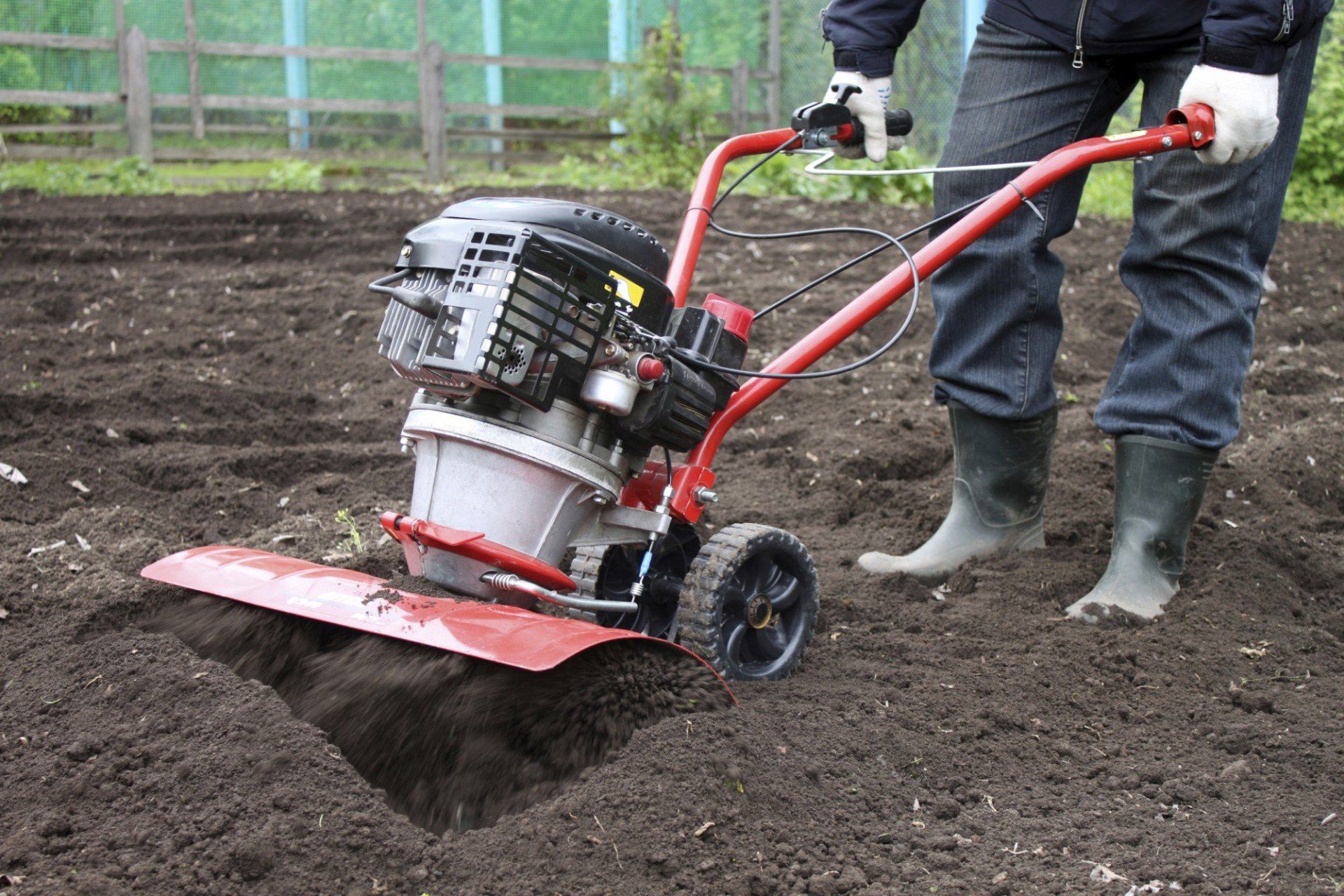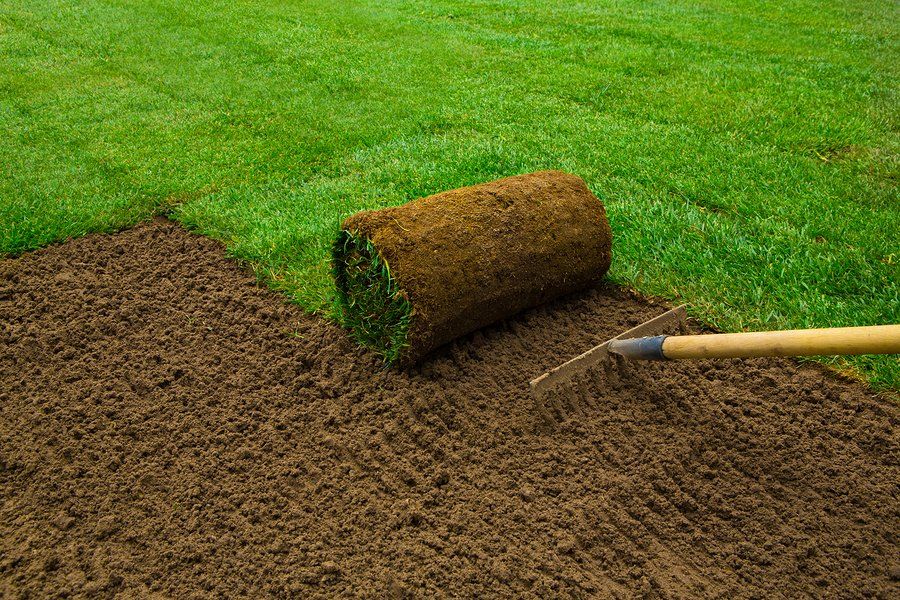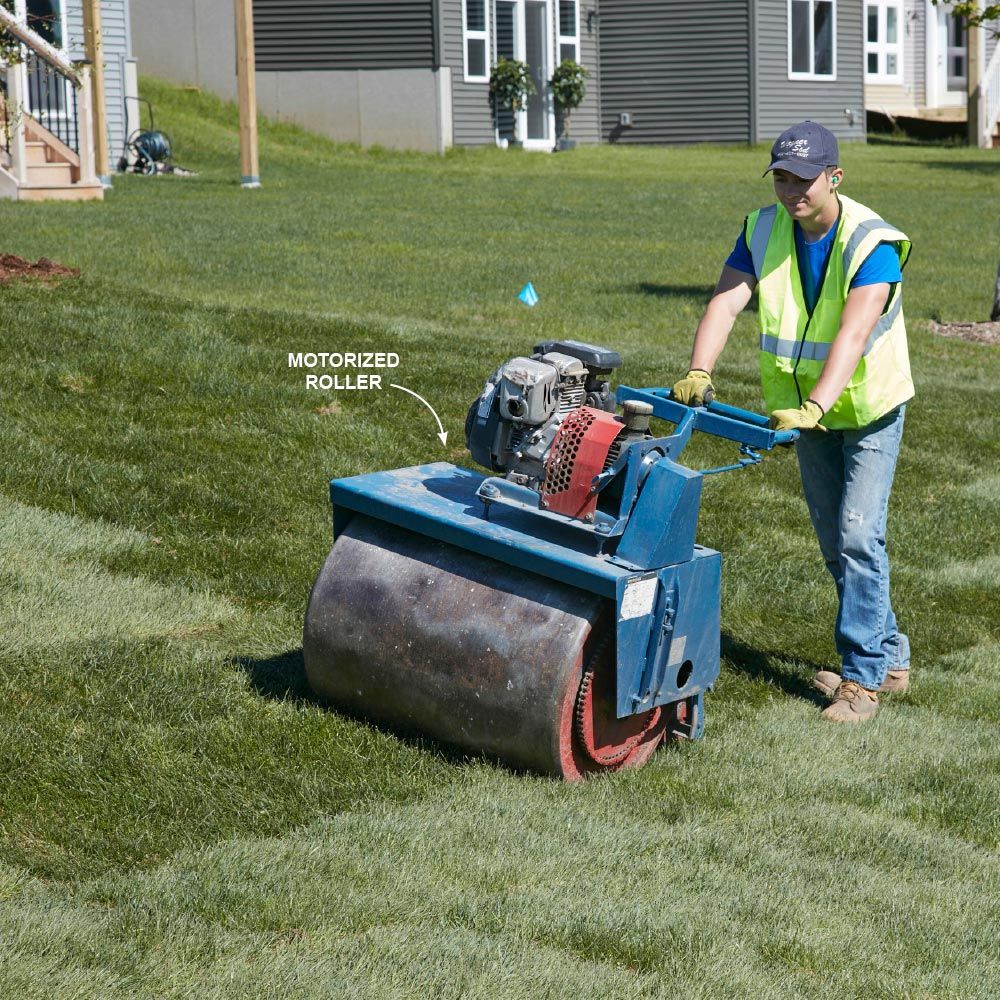EVERYTHING YOU NEED TO KNOW ABOUT INSTALLING AND MAINTAINING SOD
Whether you’re a professional landscaper looking to improve your customers greenspace, or you’re a homeowner looking to completely remake your bumpy, weed-infested lawn, establishing new turf from sod is a quick way to enhance the curb appeal of any property. In this feature, we’ll walk through the sod installation and maintenance processes. We’ll also explore which fertilizers and soil amendments you should use to help your sod quickly adapt to its new home. Let’s get started!
WHY CHOOSE SOD OVER SEED?
There are advantages and disadvantages to establishing a lawn from either seed or sod. Typically, establishing a lawn from seed is less expensive, however it can take several months for grass seed to germinate and bulk up, leaving your yard covered in straw. Sod can be installed almost any time of year because its complex root systems are better able to withstand abiotic stresses (such as heat and mild drought). The most significant advantage is the look and feel of a finished lawn within a day or two.
CHOOSING YOUR SOD VARIETY
Most grass varieties that are available for seeding are also available in sod form. It is important to choose a variety that is well adapted for your climate and local environment (sun vs. shade levels on property). One of the more popular cool season grasses used in the northern United States is Kentucky Bluegrass, however it should be noted that this variety does not perform well in extreme heat and drought. If selecting Kentucky Bluegrass, it is highly recommended to keep this variety adequately irrigated.
See the lawn grass comparison chart
to assist in choosing the right Sod for you!
GROUND PREPARATION
No matter the reason(s) for beginning a new lawn from sod, it is imperative that the ground be properly conditioned to give the sod the best chance for thriving. The best times of year to sod are spring, later summer, and fall.
If removing an old lawn, first use a wide-spectrum all purpose herbicide (such as glyphosate). This will kill all pre-existing grass and weeds. This step typically takes a few weeks to complete. Once you are certain the lawn and weeds are dead, you can use a gas-powered sod cutter to undercut the grass and weeds, freeing them from the topsoil below. Dispose of appropriately.
Next, performs a soil test to determine the pH level of the soil. If the soil is acidic, adjust with a lime product accordingly (example: Hi-Calcium Lime powered by TCS AMP-XC™ #902560)
If the soil is alkaline, adjust with peat, compost, aluminum sulfate, elemental sulfur, or iron sulfate. When adjusting the pH, these soil amendments should be tilled into the top 2-3 inches of the top soil. If the soil is also heavy in clay or suffering from compaction, consider adding gypsum (example: TCS Gypsum
#902817,
#902816) to increase porosity.
- NOTE: even sandy soils are susceptible to compaction, so avoid compacting soils with heavy equipment as much as possible.
Next, make sure the top soil has been leveled and smoothed; this will ensure the underside of the sod has maximum contact with the top soil. During this process (once again), avoid compacting the soil as much as possible. The last step in ground preparation is to spread a starter fertilizer across the top soil. There is no need to rake it in, as the sod will be placed directly atop the fertilizer. Consult the grower for sod-specific fertilizer recommendations.
- IMPORTANT: DO NOT DEPLOY ANY FERTILIZERS WITH PRE-EMERGENT HERBICIDES, AS THESE MAY HINDER ROOT DEVELOPMENT IN ESTABLISHING SOD.
SOD INSTALLATION
Once the ground has been adequately prepared, it’s time to take delivery of your sod. Sod is typically harvested within 24-48 hours of being installed. Most sod comes in the form of large rectangular sheets. These sheets are rolled or stacked, then transported direct to the installation site. It is critical that the sod be installed within 48 hours of harvest. Beyond 48 hours, sod starts to desiccate, as well as suffer from lack of sunlight.
Before starting, make sure the soil is either dry or slightly moist.
- IMPORTANT: Never lay new sod down on saturated soil; this can lead to compaction, drainage issues, and the potential for fungal outbreaks under warm conditions.
When installing sod, orient the sheets in a staggered formation, just as if you were laying bricks. Make sure sod edges are tightly pressed against each other. As sod begins to dry out, each sheet will shrink leaving gaps between sheets. These gaps are unsightly and create the perfect environment for weeds to grow. This can be avoided by molding the edges of adjoining sod pieces together, much like molding two pieces of clay into each other.
Once the sod has been deployed, use a roller to press the sod firmly against the top soil. This will accelerate root growth by eliminating air pockets and create a smoother, more level lawn.
The last step is absolutely the most important: water well! New sod need lots of water, more so than lawns starting from seed. In general, sod should be watered 3 times a day during the first week, twice a day during the 2nd week, once a day during the 3rd week, and then as needed beyond week 3. Failing to provide sod with adequate water during rooting could causing yellowing, and in some cases, the death of an entire sod sheet. You’ll know the sod has rooted well once the sheet resists any attempt to lift it off the ground.
IMPORTANT: DON’T FORGET THESE GREAT FOLLOW UP TIPS TO KEEP YOUR NEW SOD IN TOP SHAPE!
- Keep foot traffic to a minimum until sod is well rooted (usually a few months).
- After the sod is well rooted, Aerate in early to mid-fall, and then once more in the spring if necessary
- Use a pre-emergent herbicide in the spring to keep your lawn weed free through the year (don’t miss this step!).
- Use good lawn keeping practices through the remainder of the year.
GIVE YOUR NEW SOD THE EDGE WITH THESE FERTILIZER AND SOIL AMENDMENT RECOMMENDATIONS FROM TURF CARE SUPPLY!
Once your sod is set, apply AMP-XC™ Liquid Concentrate after the first watering. Apply 2oz per 1000 sq. ft. on the first application, then 1oz per 1000 sq. ft. once a month through the fall. AMP-XC (L) has the following ingredients to accelerate the transplanting and rooting processes:
- Microbial metabolites – beneficial organic compounds that provide growing turf all the build blocks they need to accelerate their metabolism and growth rate
- Chelated iron –100% soluble iron to help keep sod a deep green during the rooting process
- 7% Humic Substances – loaded with microbially derived humic and fulvic acids, these compounds help reduce soil compaction, chelated micronutrients, create an idea environment for beneficial soil microbes, and help retain water in the root zone (critically important for establishing sod)
Use a starter fertilizer that contains phosphorus at a rate of 1.0 to 1.5 lbs P per 1000 sq. ft. about 4-6 weeks after setting sod (Example: TCS GrowStar Starter Fertilizers)
Apply nitrogen at a rate of 0.5 lbs N per 1000 sq. ft. about 4-6 weeks after setting sod. Using a fertilizer with at least 30% slow release nitrogen will assist in more evening feeding and less of a pH shift in the soil.
For professional fertilizers, humic and AMP-XC™ enriched products available, please visit TurfCare’s online Product Catalog.
For green industry professionals or others interested in ordering Turfcare products, please contact our Customer Service
to find a distributor near you.
Resources:
https://turf.unl.edu/NebGuides/Establishingturffromsod2012m.pdf
https://www.thespruce.com/how-to-lay-sod-to-start-new-lawns-2132203
https://www.thisoldhouse.com/ideas/how-to-lay-sod
http://www.turfgrasssod.org/pages/consumer-resources/types-of-grasses/
Pictures:
Sod 01 (new backyard) - http://www.assiniboine.com/wp-content/uploads/2016/05/Sod_3-1024x670.jpg
Sod 02 (laying sod) - http://challengerirrigation.com/wp-content/uploads/2017/07/August-Challenger-Planting-New-Sod.jpg
Sod 03 (installing sod) - https://kglandscape.com/wp-content/uploads/2016/02/sod-install-minneapolis-mn.jpg
Sod 04 (sod sheets) - https://kglandscape.com/wp-content/uploads/2016/02/sod-install-minneapolis-mn.jpg
Sod 05 (rolling new sod) - https://kglandscape.com/wp-content/uploads/2016/02/sod-install-minneapolis-mn.jpg
Sod 06 (tilling dirt) - https://kglandscape.com/wp-content/uploads/2016/02/sod-install-minneapolis-mn.jpg
Sod 07 (spreading lime) - https://www.lawnstarter.com/blog/wp-content/uploads/2017/08/fertilizer-spreader.jpeg
Sod 08 (fertilizer on dirt) - https://www.lawnstarter.com/blog/wp-content/uploads/2017/08/fertilizer-spreader.jpeg
Sod 09 (harvesting sod) - https://www.agsod.com/wp-content/uploads/2016/04/big-roll.jpg
Sod 010 (brick pattern) - https://www.agsod.com/wp-content/uploads/2016/04/big-roll.jpg
Sod 011 (watering sod) - https://www.lawnstarter.com/blog/wp-content/uploads/2016/11/lawn-watering-tips-5.jpg
Sod 012 (aerification) - https://www.turfmagazine.com/wp-content/uploads/2016/04/AEside.jpg
Turf Care Supply - TurfReport Blog
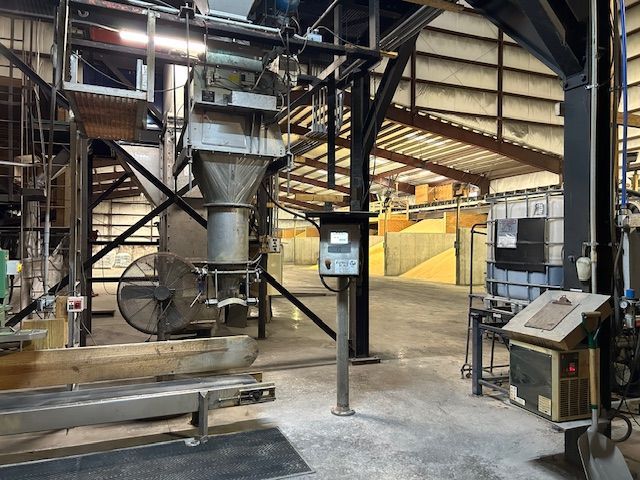
Turf Care Supply, LLC, a portfolio company of Platte River Equity, has officially acquired Beaty Fertilizer, the industry respected Tennessee-based manufacturer and blender of custom granular and liquid fertilizers, as well as combination products. This strategic move expands Turf Care’s manufacturing footprint, adds new product capabilities, and enhances overall production capacity. “The partnership with Beaty Fertilizer marks a major milestone in our journey and an important step forward in our mission to grow, innovate and lead in our industry,” said Mark Mangan, President of Turf Care. “This acquisition is more than just expansion; it’s a powerful opportunity to strengthen our product offerings, broaden our market reach and provide greater value to our customers. By welcoming Beaty into the Turf Care family, we are reinforcing our commitment to excellence and positioning ourselves for an even brighter future.” “We are excited about this next step in the Beaty Fertilizer story. For almost 50 years, our family and our employees have worked hard to serve customers and communities with pride and heart,” said John Beaty, President of Beaty. “Now, we are embracing an opportunity for growth with Turf Care. With our combined know-how and resources, we’ll keep building on what we’ve worked so hard to create and bring even more value to our customers, employees and partners. We truly believe this partnership will keep the Beaty legacy going strong while opening up new doors for growth and innovation.” Tarun Kanthety, Vice President at Platte River, added, “We believe the acquisition of Beaty Fertilizer represents a strategic step in expanding Turf Care’s footprint and product breadth... as it scales and enhances its value proposition to customers.”
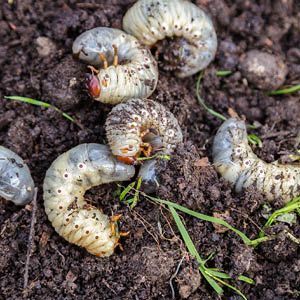
Root out Grubs, Before they Attack Yours! White grubs, the immature stage of several scarab beetles—including Japanese beetles, masked chafers, May and June beetles, and green June beetles—are a major threat to turfgrass across the Southeast. These beetles follow a complete metamorphosis (egg, grub, pupa, adult), with most species completing their cycle in one year. Eggs are laid in early summer, grubs hatch within two weeks, and begin feeding on turfgrass roots through the late summer and fall. May and June beetles differ slightly, with a two- to three-year life cycle and prolonged feeding as third-instar grubs. Grubs damage turf by severing roots, causing grass to yellow, wilt, or lift easily from the soil. Feeding is typically concentrated in patches and worsens during hot, dry weather. Wildlife digging for grubs can create further turf destruction. Healthy turf may tolerate 5–10 grubs per square foot, but damage becomes evident as populations rise or turf is under stress. Early detection and timing are essential. Scouting begins in late June, shortly after adult beetle activity peaks. Monitoring plants favored by beetles can signal egg-laying is underway. Treatment is most effective when small grubs are active—typically from mid-July through early August. For professional turfgrass managers, insecticides containing imidacloprid (Merit®), chlorantraniliprole (Acelepryn®), or trichlorfon (Dylox®) are the most effective tools. The primary months of preventative application of Acelepryn® is from April to end of May and Merit® from April into July - targeting grubs before they hatch. Curative treatments with Dylox® or similar products are applied July through the fall, when young grubs are feeding and most vulnerable. Always follow label directions for optimal application and safety. Timing may vary slightly by regional seasonal needs. Turf Care Supply has a variety of professional TCS Growstar insecticide fertilizers available to protect your turf and prevent grub damage, before it starts. Click on the button below to view products, contact your sales rep for addition TC Growstar products available.

Platte River Equity Portfolio Company Turf Care Supply, LLC Acquires Agri-Nutrients, Inc. Brunswick, OH , October 9, 2024 – Platte River Equity (“Platte River”) portfolio company Turf Care Supply, LLC (“Turf Care”) is pleased to announce its acquisition of Agri-Nutrients, Inc. (“Agri-Nutrients”), a manufacturer and blender of custom granular fertilizers for the turf & ornamental (“T&O”) industry. This strategic acquisition provides Turf Care with an established presence in the south-central United States, an enhanced product portfolio and additional manufacturing capacity. “This acquisition represents much more than a business transaction; it is a strategic step forward in expanding our reach and enhancing our customers’ growth. By bringing Agri-Nutrients into the Turf Care family, we are broadening our product portfolio, expanding our market presence and further positioning ourselves as a leader in providing innovative solutions for our customers,” said Mark Mangan, President of Turf Care. “We are excited about joining the Turf Care team,” said Jim Montgomery, President of Agri-Nutrients. “At Agri-Nutrients, our core values center around customer service and product innovation, and we are confident that this combination will allow us to better serve the needs of our customers.” “Platte River welcomes the Agri-Nutrients team to Turf Care. This transaction underscores our long-term commitment to fostering growth through both organic and inorganic initiatives across the Turf Care platform,” said Tarun Kanthety, Vice President of Platte River. “The partnership with Agri-Nutrients strengthens Turf Care’s value-added offering, creating additional growth opportunities across the combined customer base.” B&A Corporate Advisors served as the exclusive financial advisor to Agri-Nutrients. About Agri-Nutrients Founded in 1992 and based in Catoosa, OK, Agri-Nutrients is a manufacturer and blender of custom granular fertilizers for the T&O industry, predominantly selling into the lawn care, sports turf and golf course end markets. About Turf Care Supply Established in 1974, Turf Care Supply is one of the largest formulators and blenders of urea products to the T&O market. Turf Care has a comprehensive product portfolio of fertilizers, combination products (herbicide/insecticide), soil amendments and enhanced efficiency fertilizer ingredients. Turf Care's products are sold to distributors and blenders serving the commercial, residential and golf end markets. Turf Care operates four manufacturing facilities strategically located throughout the eastern U.S. About Platte River Equity Founded in 2006 and based in Denver, CO, Platte River Equity is a private equity firm focused on investments in established lower middle market operating companies within targeted industrial sectors where it has substantial operating and investing experience. Platte River utilizes prudent capital structures in order to invest in future growth opportunities and withstand changing economic environments. The firm also provides significant ongoing support to its portfolio companies through dedicated resources across functional areas. The firm has raised funds with committed capital in excess of $1.6 billion and is currently investing out of its fifth fund. The Platte River team is the largest collective investor across its funds, deeply aligning the firm with its investors and portfolio company management teams.


